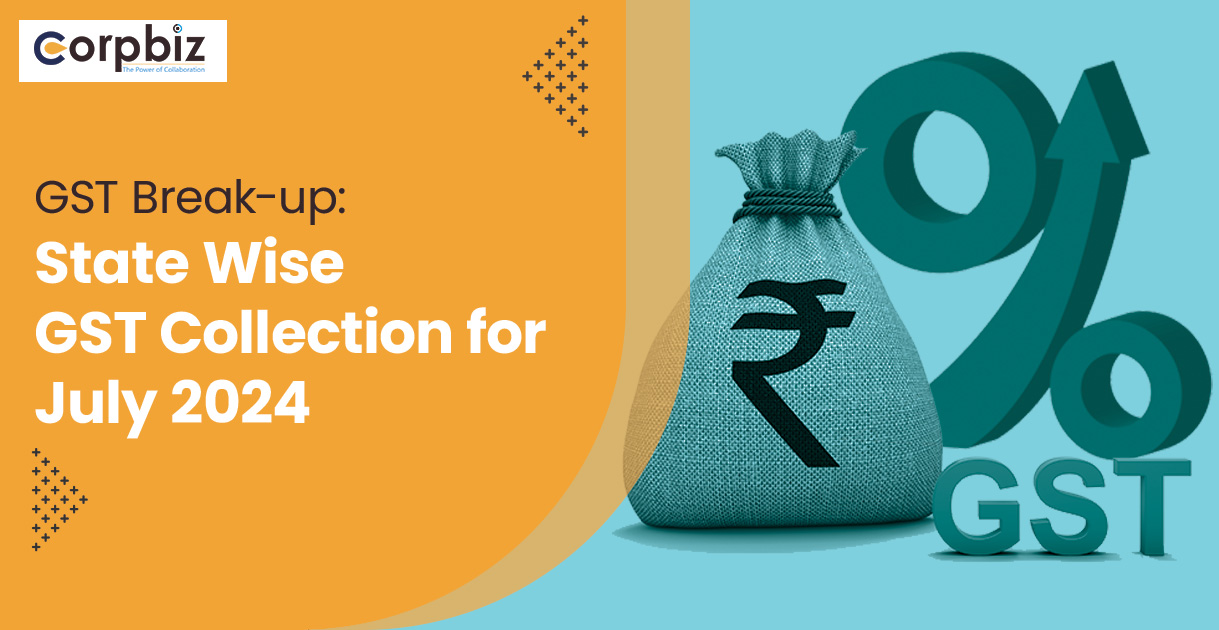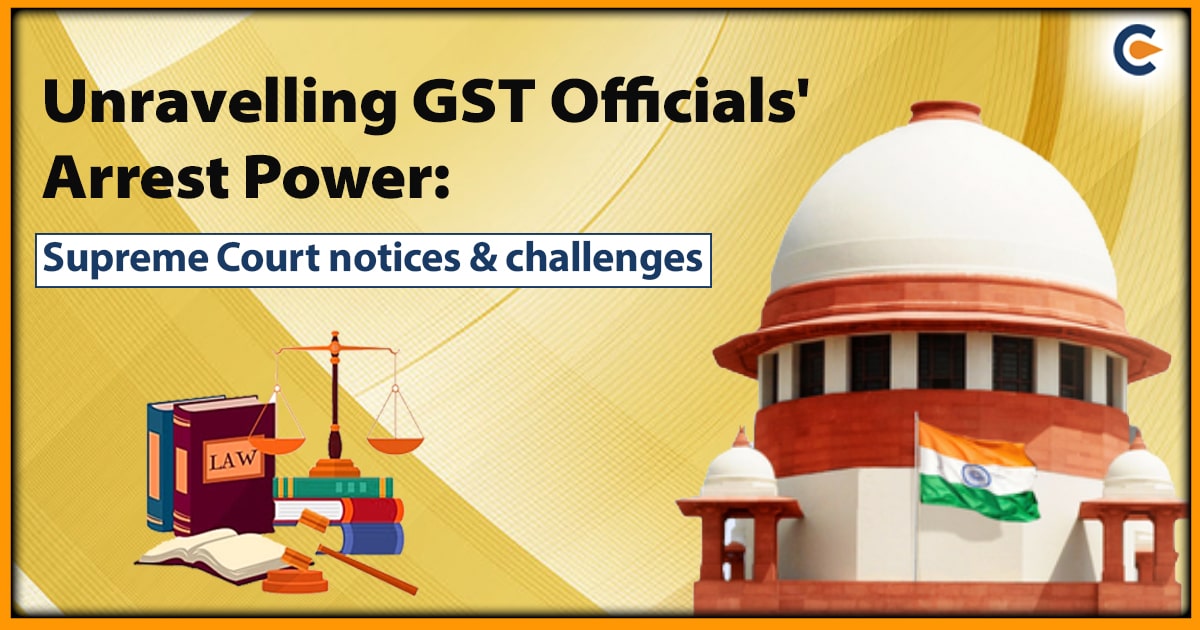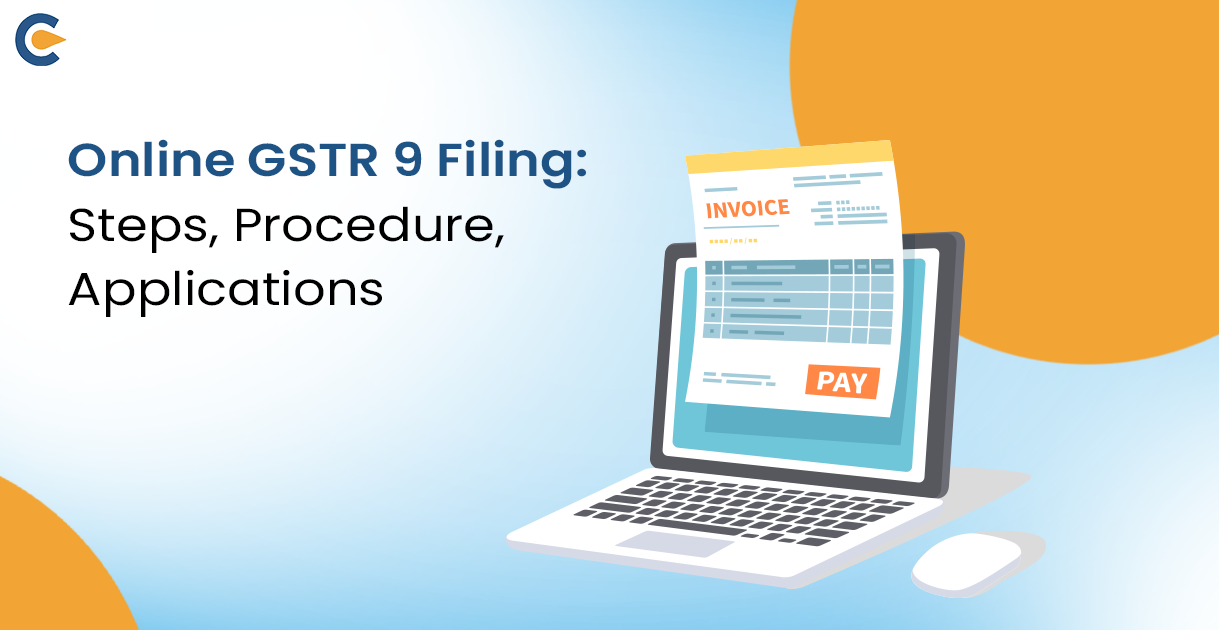The government released the July GST Documents after delaying the official announcement of June’s GST income numbers. According to the detailed report published on the Goods and Service Tax official website on August 1, 2024, the gross revenue for August 2024 increased to Rs 1.82 lac crore, up from Rs 1.65 lac crore during the same period in the previous year.
In June 2024, the amount of GST collected was roughly Rs. 1.74 lakh crore, according to a July 1, 2024 media article. The GST collected in July 2024 increased by 10.2% over the previous year. Imports climbed by 5.3%, while domestic transactions increased by 11.8%. This post will help you know the exact details of the State Wise GST Collection for July 2024.
What does GST mean?
The goods and services tax, or GST, is a tax that is imposed indirectly on the provision of products and services. Every value addition is subject to this multi-stage, destination-oriented tax, which replaces other indirect taxes such as VAT, excise duty, and service taxes. A unified domestic indirect tax code covers all of India for goods and services with GST Registration being an essential compliance requirement for businesses.
Under this system, taxes are collected at the point of sale. Five different tax rates apply to products and services under the GST: 0%, 5%, 12%, 18%, and 28%. However, some goods are exempt from GST taxes, including alcohol, petroleum products, and electricity. Under the former tax system, the various state governments imposed separate taxes on these products.
What are the Different Tax Heads under GST?
GST is divided into four categories: State Goods and Services Tax (SGST), Central Goods and Services Tax (CGST), Union Territory Goods and Services Tax (UTGST), and Integrated Goods and Services Tax (IGST).
When a supplier is located in a state different from the supply site, interstate supplies are subject to an IGST tax. When the point of supply is in the same State as the supplier’s location, intrastate deliveries are subject to an equal rate of CGST and SGST (about half the GST rate applicable for IGST).
Know the History of GST (Goods and Services Tax)
France was the first country to enact the Goods and Services Tax (GST) in 1954. Australia, Canada, the United Kingdom, Spain, South Korea, Vietnam, Monaco, and other nations have followed suit.
The GST was implemented in India in 2000 following the formation of a task force by the then-prime minister, Atal Bihari Vajpayee. Under the direction of an advisor to the finance ministry, Vijay L. Kelkar, they concluded that GST may assist in making India’s tax system better. The Union Ministry of Finance suggested implementing the GST on April 1, 2010, in 2006.
However, the Constitution Amendment Bill was presented in 2011 to make the GST law more easily enacted. Four additional GST measures, however, were authorised by the cabinet after being voted by the Lok Sabha. Later, on July 1, 2017, the GST went into effect. The following central taxes were superseded by the GST when it was implemented:
- Service tax
- Duties of excise
- Central excise duties
- Cess and surcharge
- Additional duties of excise
- Additional duties of customs
- GST services also subsumed the following state taxes:
- Entry tax
- Purchase tax
- Luxury tax
- State VAT
- Central sales tax
- Entertainment tax
- Taxes on advertisements
- State cess and surcharges
- Taxes on gambling and lottery
Remember that taxpayers may be excluded from the Goods and Services Tax if their yearly turnover does not exceed Rs. 20 lakhs. The threshold for states under special categories is Rs. 10 lakhs. The GST law also expanded the choice of a threshold exemption and compounding system.
Objectives of GST
The objective of GST is to streamline the indirect tax structure by unifying multiple taxes into a single system and to promote a seamless flow of goods and services across India. However, below are some of the objectives of GST:
To achieve the thought of ‘One Nation, One Tax’
The GST has replaced several indirect levies that were in effect under the previous tax structure. One advantage of a unified tax is that every State charges the same amount for a given good or service.
To subsume a majority of the indirect taxes in India
All of India’s significant indirect taxes were combined under the General Sales Tax, significantly reducing taxpayers’ compliance burden and making tax administration more accessible for the government.
To eliminate the cascading effect of taxes
One of the primary objectives of the GST was to remove the cascading effect of taxes. Taxpayers were previously unable to offset the tax credits from one tax against the other because of disparate indirect tax legislation.
To curb tax evasion
India’s GST laws are significantly stricter than any previous indirect tax legislation. Taxpayers are limited to claiming an input tax credit under GST on invoices uploaded by their suppliers.
This way, the chances of obtaining input tax credits on fraudulent invoices are negligible. This goal has been strengthened even further with the advent of e-invoicing.
To increase the taxpayer base
GST is a consolidated tax on goods and services, which has helped widen India’s tax base. Additionally, the stricter laws surrounding input tax credits have helped bring some unorganised sectors, like the construction industry in India, under the tax net.
Online procedures for ease of doing business
In the past, taxpayers encountered numerous difficulties while interacting with various tax agencies under each tax legislation. Furthermore, most of the evaluation and refund processes were done offline, even if return filing was done online. These days, practically all GST procedures are completed online.
An improved logistics and distribution system
Multiple documents are not required to supply products under a single indirect tax system. Among its many advantages, GST reduces cycle times for transportation, enhances supply chains and turnaround times, and encourages warehouse consolidation.
To promote competitive pricing and increase consumption
Revenues from indirect taxes and consumption have increased due to the introduction of the GST. The former regime’s cascading effect of taxes resulted in higher prices of items in India than in international markets.
Analysis of the GST Collection for July 2024
The July 2024 monthly GST collections show a noteworthy 10.2% annual rise. Substantial increases in imports (up 5.3%) and domestic transactions (up 11.8%) are the main drivers of this growth.
Additionally, compared to domestic transactions, which increased by 8.9% from the previous month, import transactions showed a sharp increase in monthly income of 14.2%.
1. GST Collection for July 2024 State-wise
The government has publicly made the states’ respective GST receipts for July 2024. In terms of total numbers, Maharashtra has once again led the list, followed by Gujarat, Karnataka, Tamil Nadu, Uttar Pradesh, and Haryana.
Regarding the most considerable YoY growth, Manipur and Ladakh saw growth rates of over 60% when compared to the same month the previous year. Compared to July 2023, monthly revenue in Nagaland, Andaman and Nicobar Island increased by 34% and 27% yearly.
States like Maharashtra and Karnataka, which contribute the most monthly revenue, had year-over-year growth rates of 11% and 13%, respectively. The list of state-by-state revenue for each State and UT is as follows:
| State/UT | Jul 23 | Jul 24 | Growth (%) |
| Jammu and Kashmir | 549 | 629 | 15% |
| Himachal Pradesh | 917 | 854 | -7% |
| Punjab | 2,000 | 2,069 | 3% |
| Chandigarh | 217 | 233 | 8% |
| Uttarakhand | 1,607 | 1,700 | 6% |
| Haryana | 7,953 | 9,082 | 14% |
| Delhi | 5,405 | 5,964 | 10% |
| Rajasthan | 3,988 | 4,369 | 10% |
| Uttar Pradesh | 8,802 | 9,125 | 4% |
| Bihar | 1,488 | 1,569 | 5% |
| Sikkim | 314 | 325 | 4% |
| Arunachal Pradesh | 74 | 81 | 10% |
| Nagaland | 43 | 58 | 34% |
| Manipur | 42 | 68 | 61% |
| Mizoram | 39 | 39 | -1% |
| Tripura | 78 | 72 | -8% |
| Meghalaya | 175 | 142 | -19% |
| Assam | 1,183 | 1,370 | 16% |
| West Bengal | 5,128 | 5,257 | 3% |
| Jharkhand | 2,859 | 3,135 | 10% |
| Odisha | 4,245 | 4,925 | 16% |
| Chhattisgarh | 2,805 | 3,319 | 18% |
| Madhya Pradesh | 3,325 | 3,683 | 11% |
| Gujarat | 9,787 | 11,015 | 13% |
| Dadra and Nagar Haveli and Daman & Diu | 354 | 339 | -4% |
| Maharashtra | 26,064 | 28,970 | 11% |
| Karnataka | 11,505 | 13,025 | 13% |
| Goa | 528 | 593 | 12% |
| Lakshadweep | 2 | 1 | -51% |
| Kerala | 2,381 | 2,493 | 5% |
| Tamil Nadu | 10,022 | 10,490 | 5% |
| Puducherry | 216 | 225 | 4% |
| Andaman and Nicobar Islands | 31 | 39 | 27% |
| Telangana | 4,849 | 4,940 | 2% |
| Andhra Pradesh | 3,593 | 3,346 | -7% |
| Ladakh | 23 | 38 | 67% |
| Other Territory | 226 | 220 | -2% |
| Centre Jurisdiction | 209 | 238 | 14% |
| Totals | 1,23,026 | 1,34,036 | 9% |
2. Comparison of the Monthly SGST Settled by State: Before vs After
The state-by-state summary of the State GST data for July 2024, both pre-and post-settlement, is provided below:
| Pre-Settlement SGST | Post-Settlement SGST | |||||
| State/UT | July-23 | July-24 | Growth | July-23 | July-24 | Growth |
| Jammu and Kashmir | 234 | 257 | 10% | 663 | 753 | 14% |
| Himachal Pradesh | 233 | 240 | 3% | 518 | 583 | 12% |
| Punjab | 727 | 753 | 4% | 1,865 | 1,902 | 2% |
| Chandigarh | 57 | 63 | 11% | 190 | 186 | -2% |
| Uttarakhand | 415 | 490 | 18% | 625 | 815 | 30% |
| Haryana | 1,610 | 1,820 | 13% | 2,866 | 3,309 | 15% |
| Delhi | 1,221 | 1,285 | 5% | 2,827 | 2,820 | 0% |
| Rajasthan | 1,380 | 1,436 | 4% | 3,199 | 3,610 | 13% |
| Uttar Pradesh | 2,751 | 2,811 | 2% | 6,176 | 6,953 | 13% |
| Bihar | 718 | 739 | 3% | 2,187 | 2,351 | 8% |
| Sikkim | 30 | 25 | -14% | 83 | 73 | -12% |
| Arunachal Pradesh | 37 | 37 | 0% | 150 | 141 | -6% |
| Nagaland | 18 | 26 | 41% | 88 | 89 | 1% |
| Manipur | 23 | 34 | 52% | 80 | 101 | 25% |
| Mizoram | 22 | 21 | -4% | 79 | 75 | -6% |
| Tripura | 40 | 35 | -12% | 125 | 129 | 3% |
| Meghalaya | 50 | 40 | -20% | 149 | 136 | -9% |
| Assam | 451 | 463 | 3% | 1146 | 1193 | 4% |
| West Bengal | 1,953 | 1,925 | -1% | 3,483 | 3,709 | 6% |
| Jharkhand | 721 | 741 | 3% | 1,051 | 1,174 | 12% |
| Odisha | 1,300 | 1482 | 14% | 1,716 | 2,035 | 19% |
| Chhattisgarh | 627 | 722 | 15% | 1,009 | 1,349 | 34% |
| Madhya Pradesh | 1,045 | 1,119 | 7% | 2,626 | 3,132 | 19% |
| Gujarat | 3,293 | 3,736 | 13% | 5,210 | 5,838 | 12% |
| Dadra and Nagar Haveli and Daman and Diu | 56 | 60 | 6% | 85 | 122 | 43% |
| Maharashtra | 7,958 | 8,630 | 8% | 12,124 | 13,201 | 9% |
| Karnataka | 3,181 | 3,557 | 12% | 5,831 | 6,435 | 10% |
| Goa | 173 | 207 | 20% | 320 | 362 | 13% |
| Lakshadweep | 2 | 1 | -65% | 14 | 12 | -12% |
| Kerala | 1,093 | 1,101 | 1% | 2,534 | 2,514 | -1% |
| Tamil Nadu | 3,300 | 3,637 | 10% | 5,419 | 6,489 | 20% |
| Puducherry | 41 | 42 | 2% | 99 | 117 | 18% |
| Andaman and Nicobar Islands | 11 | 19 | 68% | 37 | 47 | 28% |
| Telangana | 1,623 | 1,625 | 0% | 3,345 | 3,576 | 7% |
| Andhra Pradesh | 1,199 | 1,074 | -10% | 2,755 | 2,613 | -5% |
| Ladakh | 11 | 19 | 75% | 58 | 72 | 23% |
| Other Territory | 19 | 15 | -25% | 75 | 95 | 28% |
| Grand Total | 37,623 | 40,289 | 7% | 70,811 | 78,110 | 10% |
What are the New Compliances Under GST?
Apart from online filing of the GST returns, the GST regime has introduced various other mechanisms.
1. e-Way Bills
In April 2018, the Goods and Services Tax (GST) introduced a centralised waybill system called “E-way bills.” This system was launched on April 1 for inter-state movement of goods and on April 15 for staggered intra-state movement.
The e-way bill system allows producers, distributors, and carriers to quickly generate e-way bills for the goods they transport from their place of origin to their destination on a common portal. The tax authorities also benefit from this system, as it reduces time spent at checkpoints and lowers the incidence of tax evasion.
2. E-invoicing
The e-invoicing system became operative on October 1, 2020, for companies with a combined yearly revenue of more than Rs. 500 crores during the previous fiscal years (2017–18). This system was expanded to include those with a total annual revenue of more than Rs—100 crore starting January 1, 2021.
For each business-to-business invoice these companies submit, they must get a distinct invoice reference number by uploading it through the GSTN’s invoice registration system. The portal confirms the invoice’s accuracy and legitimacy. After that, a QR code and digital signature are used to authorise.
E-invoicing makes invoice interoperability possible and lowers data entry errors. It is intended to transmit invoice data straight from the IRP to the e-way bill and GST portals. As a result, it will not require manual data entry when filing GSTR-1 and will also assist in creating e-way invoices.
Conclusion
The July 2024 GST collection data presents a positive outlook for India’s economic development. The contributions from different states demonstrate the nation’s varied economic landscape as it recovers and grows. By tackling the obstacles and seizing the opportunities, India can guarantee equitable and long-lasting economic growth in every area.
Policymakers, economists, and companies rely heavily on the state-by-state breakdown of GST collections as a crucial tool for comprehending and navigating the intricate dynamics of the Indian economy. In the future, optimising GST collections and economic prosperity will require a sustained effort to enhance compliance, use technology, and encourage equitable growth.
Ensure effortless GST Compliance by visiting our website corpbiz and get GST Registration and GST Return Filing services today to maximize your tax benefits.
Frequently Asked Question
What is GST?
The products and services tax, or GST, is a comprehensive indirect tax imposed on the production, distribution, and use of products and services throughout India.
Why GST is necessary?
The Goods and Services Tax (GST) is a significant policy tool because it eliminates the cascading effect of taxes, promotes uniformity across the nation, and simplifies the tax structure by removing several indirect taxes.
When was the Goods and Service Tax (GST) implemented in India?
The GST went into effect at midnight on July 1, 2017. It became operative after the Indian Parliament passed the Goods and Services Tax Act.
What is the significance of state-wise GST collection data?
The breakdown of GST collections by State offers essential insights into individual states’ economic performance, how much each State contributes to the national GST pool, and how different government policies affect spending patterns.
Which states typically contribute the most to GST revenue?
States with more significant economies and higher consumption levels, like Maharashtra, Gujarat, and Karnataka, usually account for most of the GST revenue.
How can I access the detailed state-wise GST collection data?
The State’s breakdown of GST collections is often published on the GST Network portal or the Ministry of Finance’s official website.
What was the total GST collection for July 2024?
The approximate total amount of GST collected in July 2024 was ₹1.74 lakh crore, which is a noteworthy measure of economic activity and compliance.
What trends were observed in GST collections in July 2024?
GST receipts for July 2024 increased by 12% over the year before. Higher levels of consumption in different states, better compliance, and increasing economic activity were all cited as reasons for this gain.
How does GST collection impact inflation?
Changes in the GST rates on products and services can impact prices, although GST collections do not directly affect inflation. Increasing the GST rate on necessities may result in higher consumer costs, fuelling inflation. On the other hand, cutting prices and lowering GST rates can aid in managing inflation.
Are there any challenges in state-wise GST collection?
Yes, some challenges in state-wise GST collection include:
Tax Evasion: Tax evasion persists as a problem despite efforts to combat it.
Complicated Compliance: Small companies may find it challenging to comply with GST, which could result in underreporting.
Variation in Economic Activity: Uneven GST revenues may result from variations in economic activity amongst states.
Read Our Article: Key Highlights of 53rd GST Council Meeting











